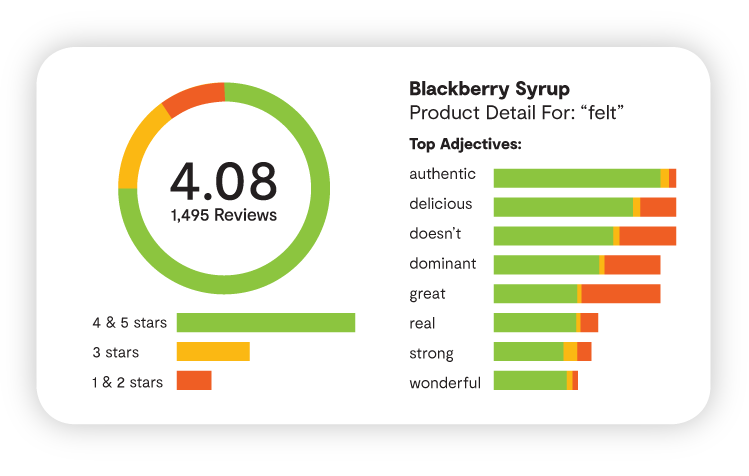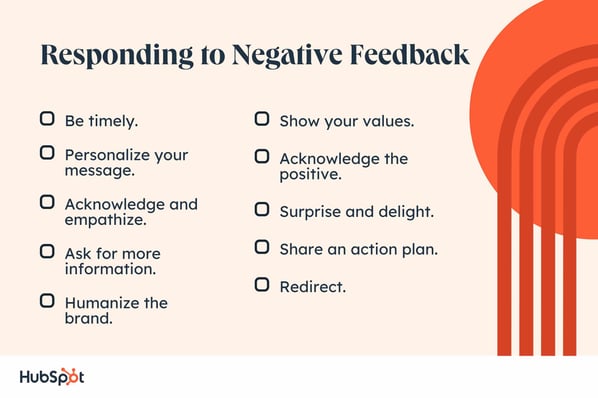I've seen my fair share of brands obsessing over perfection. They chase after flawless five-star ratings and spotless testimonials like they're the holy grail of credibility. But let me tell you, I've learned a thing or two about the counterintuitive power of negative reviews.
You see, in a world where consumers are bombarded with polished marketing narratives at every turn, authenticity has become a precious commodity. People are craving something real, something raw, something that proves your brand is more than just a carefully curated highlight reel. And that's where negative reviews come in.
Now, I know what you're thinking. “Negative reviews? Are you crazy? I've been busting my butt to keep those things at bay!” Trust me, I get it. But hear me out because embracing the occasional less-than-perfect feedback can actually be a smart move for your B2C SaaS brand. It's a paradox, but it's one that can boost your credibility, build deep trust with your audience, and even help you improve your product in ways you never thought possible.

The Power of Authenticity
| Percentage of Negative Reviews | Impact on Trust and Credibility |
|---|---|
| 0% | May appear too good to be true |
| 1-10% | Enhances authenticity and trust |
| 11-25% | Balanced and realistic |
| 26-50% | Raises concerns about quality |
| 51%+ | Severely damages reputation |
A spotless track record of exclusively positive reviews can actually raise suspicions, leaving potential customers wondering if the feedback is genuine or carefully curated. This sadly is the case these days, just look at any of your favorite product's G2 profiles. Paradoxically, the presence of a few negative reviews amidst a sea of positive ones can enhance the perceived authenticity of your brand.
Consider the case of Slack, the wildly successful team collaboration platform. Despite its widespread acclaim, Slack's app store page features a mix of glowing praise alongside constructive criticism and even the occasional scathing review. Rather than detracting from Slack's credibility, this balanced feedback reinforces the notion that the reviews are authentic and unfiltered. It humanizes the brand, showcasing that even the most beloved SaaS products aren't immune to the occasional dissatisfied customer.

Building Trust Through Transparency
Transparency is a cornerstone of trust in any relationship, and the bond between a B2C SaaS brand and its customers is no exception. By embracing negative reviews rather than suppressing them, you demonstrate a commitment to transparency that can foster deep, long-lasting trust.
Take the example of Basecamp, the pioneering project management software. Basecamp's website prominently features a “Negative Reviews” section alongside glowing testimonials. By openly acknowledging and addressing criticisms, Basecamp sends a powerful message: they have nothing to hide and are committed to continuous improvement based on customer feedback.
This level of transparency is particularly impactful for B2C SaaS brands targeting customers at the consideration stage of the buyer's journey. When potential customers are evaluating their options and seeking reassurance, a brand that openly embraces both positive and negative feedback stands out as authentic and trustworthy.

Valuable Insights for Product Improvement
Negative reviews, when approached with an open mind and a growth mindset, can be a goldmine of valuable insights for product improvement. While glowing praise is undoubtedly gratifying, it's the constructive criticism that often holds the key to unlocking the next level of innovation and customer satisfaction.
| Review Category | Example Feedback | Potential Improvement Areas |
|---|---|---|
| User Experience | "The app is confusing to navigate" | - Intuitive UI design - Onboarding process |
| Feature Request | "I wish it had X feature" | - New feature development - Integration with other tools |
| Performance | "The software is slow and buggy" | - Code optimization - Bug fixing and testing |
| Compatibility | "It doesn't work on my device" | - Cross-platform support - Browser compatibility |
Consider the story of Canva, the user-friendly graphic design platform. In its early days, Canva received a steady stream of negative reviews lamenting the lack of certain features and design limitations. Rather than dismissing these critiques, Canva's team actively engaged with the feedback, using it as a roadmap for product enhancements. By listening to and addressing the pain points expressed in negative reviews, Canva continuously refined its offering, ultimately catapulting itself to market dominance.
For B2C SaaS brands, embracing negative reviews as a source of product insights can be a game-changer. It demonstrates a customer-centric approach and a genuine commitment to delivering value. When potential customers see that you not only tolerate but actively encourage and act upon constructive feedback, they are more likely to view your brand as responsive, adaptable, and dedicated to their success.

Using negative reviews wisely.
While the benefits of negative reviews are clear, it's crucial to approach them with tact and strategy. Here are a few specific tactics to help you leverage negative reviews effectively:
Respond to negative reviews promptly and empathetically.
Show that you value customer feedback and are committed to addressing concerns. A thoughtful, personalized response can turn a disgruntled customer into a brand advocate.
| Review Type | Response Approach | Key Elements |
|---|---|---|
| Product Feedback | Thank the customer and note the feedback | - Acknowledge the issue - Outline steps for improvement |
| Customer Service | Apologize and offer a solution | - Show empathy - Provide clear action steps |
| Misunderstanding | Clarify the situation and provide explanations | - Address misconceptions - Offer additional resources |
| Inappropriate | Politely address the issue and report if necessary | - Maintain professionalism - Follow platform guidelines |
Highlight negative reviews that showcase your brand's strengths.
Not all negative reviews are created equal. Some may highlight areas where your product excels compared to competitors. Strategically featuring these reviews can reinforce your unique selling proposition.
Use negative reviews to create compelling case studies.
Showcase how you transformed a customer's negative experience into a success story through exceptional support and problem-solving. This demonstrates your commitment to customer success and can be a powerful trust-builder.
Incorporate negative feedback into your content strategy.
Address common criticisms head-on in your blog posts, whitepapers, and webinars. This proactive approach shows that you are transparent, self-aware, and dedicated to continuous improvement.
The social proof paradox is a powerful force that can be used to boost credibility, build trust, and drive product innovation. Strategically applying negative reviews can differentiate your brand as authentic, transparent, and customer-centric.
Remember, the goal is not to eliminate negative reviews entirely, but rather to embrace them as an integral part of your growth journey. By approaching negative feedback with empathy, curiosity, and a commitment to improvement, you can transform potential roadblocks into stepping stones towards success.
FAQ
1. Why should I embrace negative reviews for my B2C SaaS brand?
Embracing negative reviews can boost your brand's credibility, build trust with your audience, and provide valuable insights for product improvement. It demonstrates authenticity, transparency, and a commitment to customer success.
2. Won't negative reviews harm my brand's reputation?
When handled strategically, negative reviews can actually enhance your brand's reputation. They show that you value honest feedback, are committed to continuous improvement, and are confident in your product's ability to meet customer needs.
3. How can I encourage customers to leave honest reviews?
To encourage honest reviews, make it easy for customers to provide feedback. Send follow-up emails, include links to review platforms in your product or website, and actively seek out customer opinions. Most importantly, demonstrate that you value and act upon their feedback.
4. What's the ideal ratio of positive to negative reviews?
While there's no perfect ratio, having around 10-25% negative reviews can provide a balanced and realistic perspective. This range shows that you're not hiding anything, while still maintaining a predominantly positive reputation.
5. How should I respond to negative reviews?
Respond to negative reviews promptly, empathetically, and professionally. Thank the customer for their feedback, acknowledge their concerns, and outline the steps you're taking to address the issue. Show that you value their input and are committed to finding a solution.
6. Can I delete or hide negative reviews?
Avoid deleting or hiding negative reviews unless they violate platform guidelines or contain inappropriate content. Removing genuine feedback can backfire and damage your brand's credibility. Instead, focus on addressing the issues raised and showcasing your commitment to customer satisfaction.
7. How can I use negative reviews to improve my product?
Regularly analyze negative reviews to identify common pain points, feature requests, or areas for improvement. Use this feedback to inform your product roadmap and prioritize updates that address customer needs. Close the loop by letting customers know when their feedback has led to improvements.
8. Should I incentivize customers to leave positive reviews?
No, avoid incentivizing customers to leave positive reviews, as this can lead to biased and inauthentic feedback. Instead, focus on providing an exceptional product and customer experience that naturally encourages genuine, positive reviews.
9. How can I leverage negative reviews in my marketing content?
Incorporate negative reviews into your content strategy by addressing common concerns head-on, creating case studies that showcase how you've turned negative experiences into success stories, and using balanced feedback to highlight your product's strengths and competitive advantages.
10. What if I receive a negative review that I believe is unfair or inaccurate?
If you receive a negative review that you believe is unfair or inaccurate, respond calmly and professionally. Provide context or clarification where necessary, but avoid getting defensive. Offer to take the conversation offline to find a resolution, and remember that your response is visible to other potential customers.






